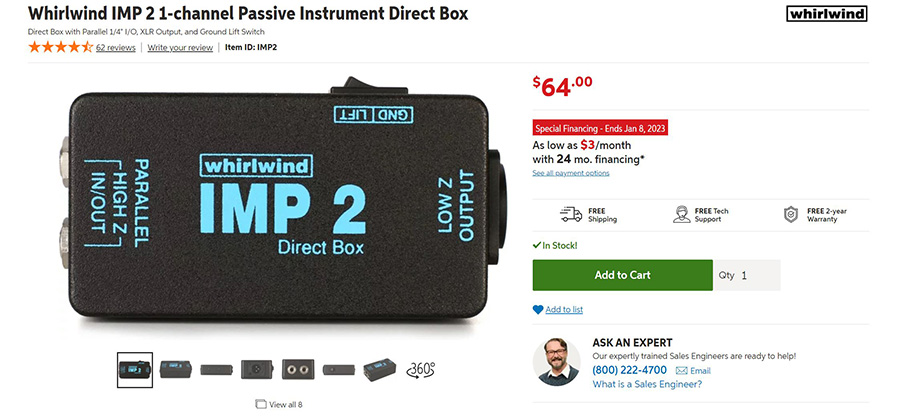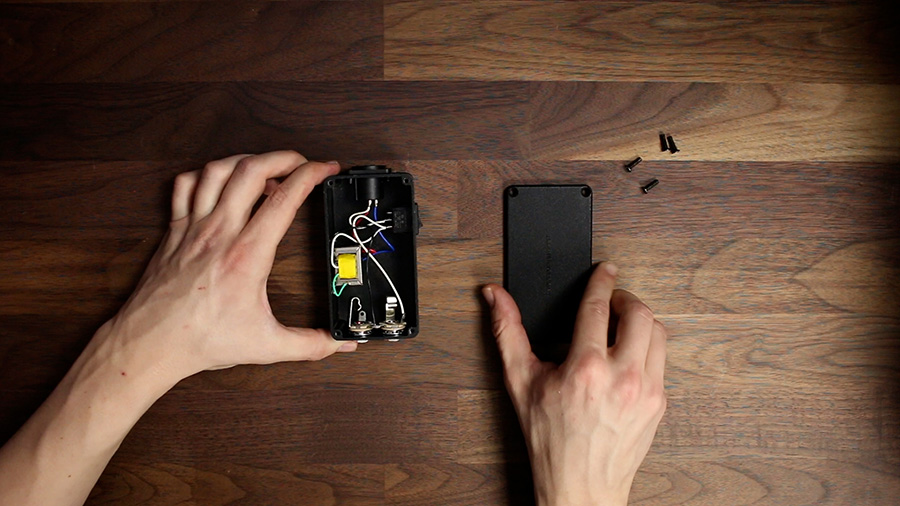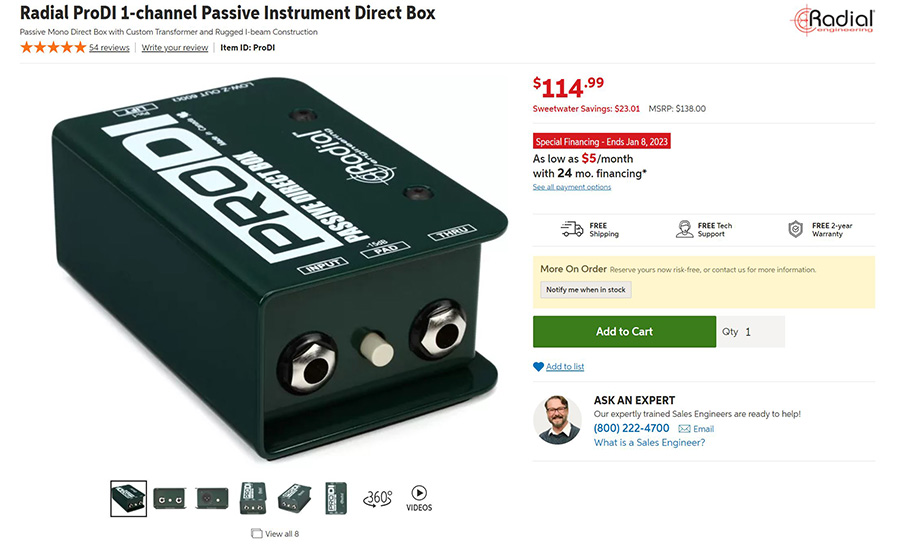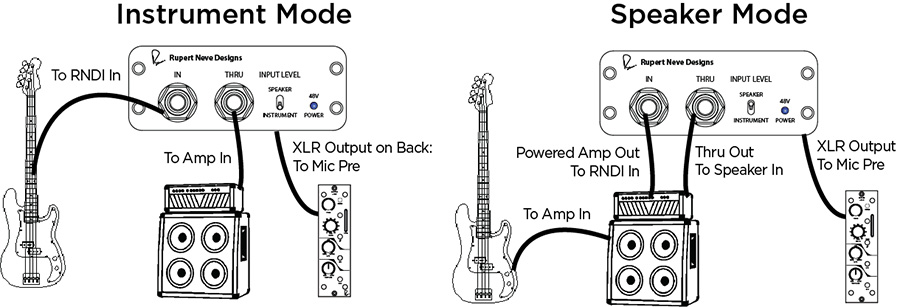What Is A DI Box?
A DI box (or direct box) allows you to connect instruments and other sources to mic inputs and can also balance signals to prevent noise over long cable runs.
But they’re not all created equal. So, in this post, I’ll show you my recommendations for the best DIs depending on your budget and how you plan to use it.
In the video above, I compare each direct box so that you can hear the differences for yourself.
Best Budget DI Box
If you’re on a strict budget, you can find direct boxes for as little as about $25. Those will probably get the job done, but I would urge you to spend just a bit more, if your budget allows you to.
For around $65, you can get the Whirlwind IMP 2, which has a good reputation – both for it’s sound quality and durability at that price point.

I’ve seen these used a lot over the years and they are extremely reliable. Mine is fairly new and doesn’t see a lot of action outside of my studio, but I’ve seen dozens of these DIs where the label is completely worn off and they still work fine.
The IMP 2 is sort of the SM58 of DI boxes, in that it can stand up to the wear and tear of live sound and touring and still deliver day in and day out.
You can see here that the transformer is riveted to the chassis, not glued, which sets it apart from some of the cheaper options out there.

You’ll also notice that there is a ground lift. This will often help to eliminate buzz or hum associated with ground loops, which is a handy feature in and of itself.
For anyone on a budget, I’d recommend this DI for guitar, keyboard, bass, or unbalanced line level inputs.
Best Passive DI Boxes
If you have a little more wiggle room in your budget, the Radial ProDI is a popular choice. The phase and isolation performance is mostly what you’re paying for over the Whirlwind DI I just showed you.
The ProDI also has an even more rugged design that reduces movement inside the DI that could cause faults over time.

The ProDI is a passive direct box, which means it doesn’t require any power to function. In general, passive DIs help to reduce system noise by using transformers that don’t require external power.
A common guideline is to use a passive DI for active sources, such as active acoustic-electric guitars, keyboards and synthesizers although they can also be used with passive sources.
The ProDI has a ground lift, just like the Whirlwind IMP 2. But it also has a -15 dB pad. This is useful when the input level from your instrument or source is too hot and you need to turn it down a little to avoid distortion.

There are probably better, more expensive options out there, but I’ve been very pleased with the sound quality and reliability of this DI.
I also want to mention two similar DI boxes that offer more flexibility…
First is the Radial ProD2, which is a 2-channel version of the ProDI. This one is great for stereo keyboards and smartphones.
Second is the Radial ProAV2, which has RCA, 1/4-inch, and 3.5mm inputs. This is very useful for integrating consumer audio products with professional systems.
Best Active DI Boxes
Like I said before, passive DI boxes are generally used with active sources while active DIs are generally used for passive sources. This isn’t a strict rule or anything – just a guideline.
If you’re connecting a bass or guitar with passive pickups, I’d recommend using an active DI. Active DIs will usually get their power from a battery or phantom power.
Two very common active DIs are the Radial J48 and the Countryman Type 85. I’ve used both of these many times and they sound great.
By far, my favorite DI for recording bass and guitar is the Rupert Neve RNDI.

The RNDI can accept an instrument or line level signal just like all of the other DIs I’ve shown you in this video, but it can do more than that. When I flip the switch to “Speaker”, the direct box can accept a signal up to a 1000W.
I really appreciate this as a guitarist, because it allows me to record the guitar signal AFTER the preamp stage of my amplifier, or even after the power amp stage!

The tube amp people out there know – 90% or your tone is in those preamp tubes. Having the ability to capture that without using a microphone is awesome. When connecting the power amp output to this DI, just be sure to connect a speaker with the “Thru” output so that the amp is properly loaded or you’ll damage the amp.
The RNDI also has the best sound quality compared to any of the DIs on this list, but the sound quality and features come at a cost – this DI box is $300!
